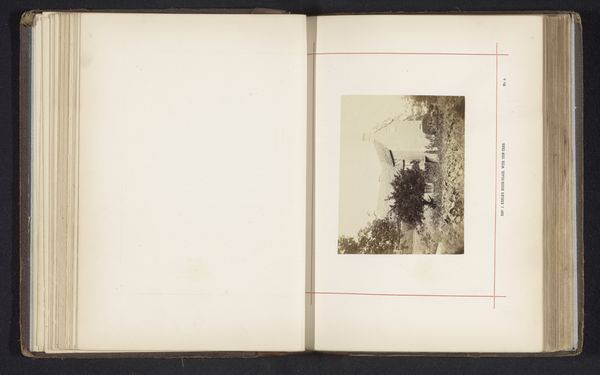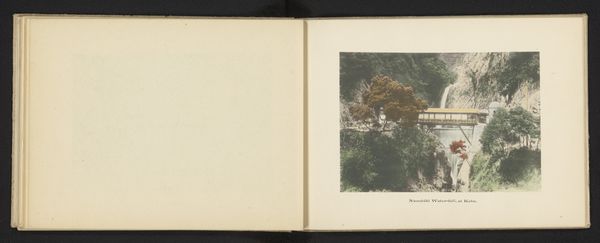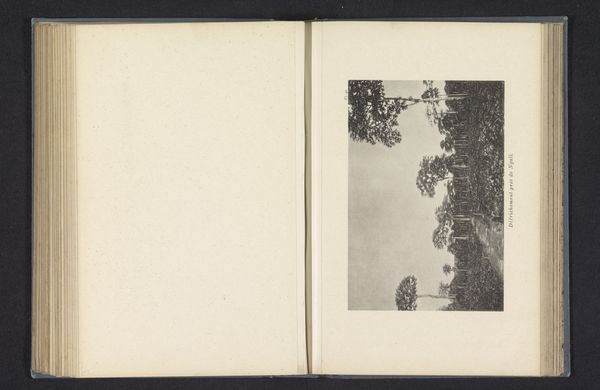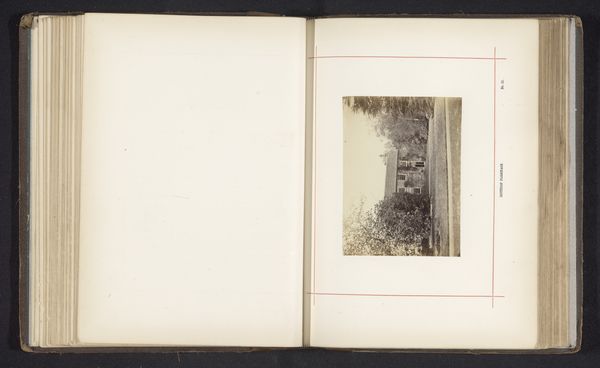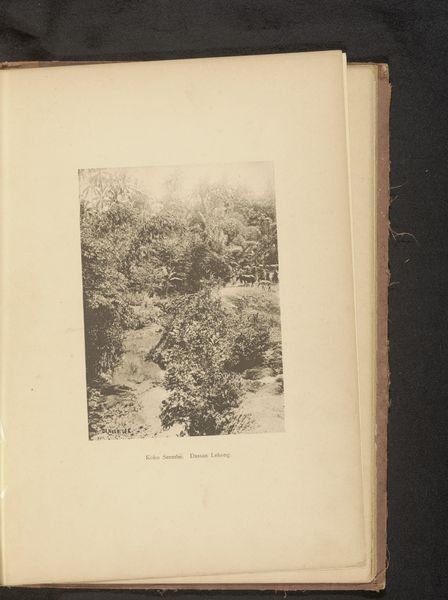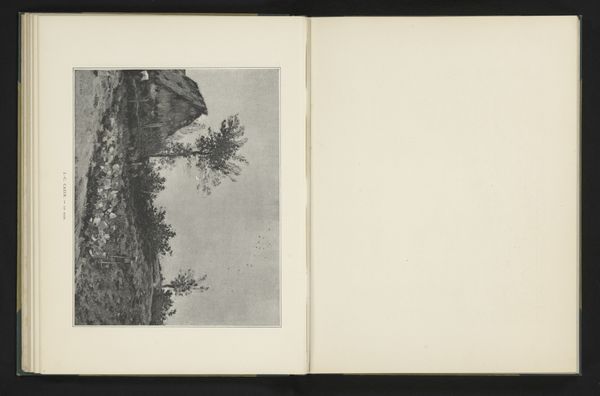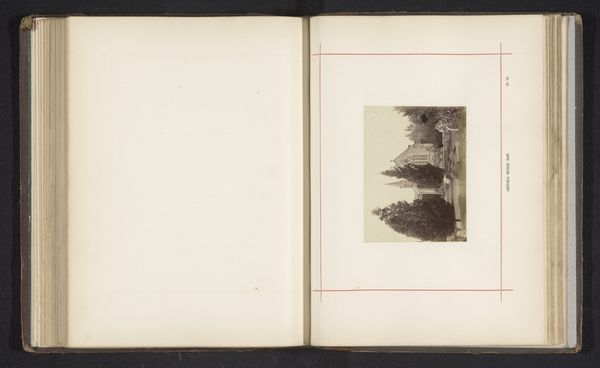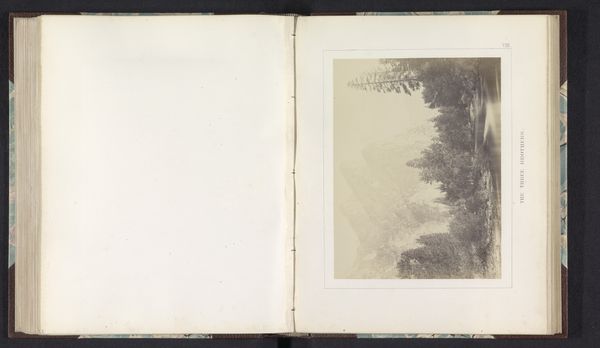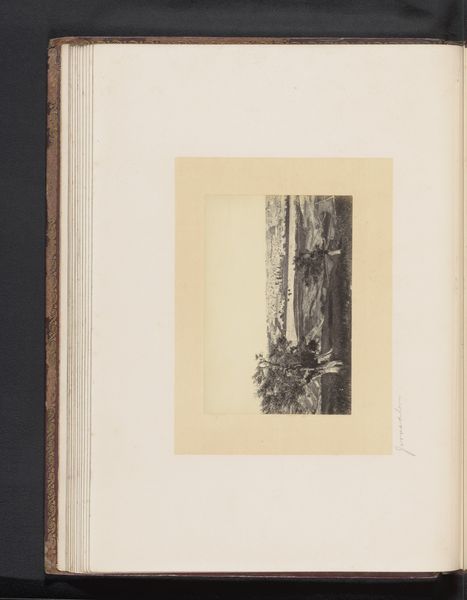
Vrouw in traditionele Japanse kleding met een parasol die een baby op haar rug draagt c. 1895 - 1905
0:00
0:00
photography
#
portrait
#
photography
Dimensions: height 105 mm, width 151 mm
Copyright: Rijks Museum: Open Domain
Curator: Here we have a captivating hand-colored albumen print from around the turn of the century, created by Kōzaburō Tamamura. It's titled "Woman in traditional Japanese clothing with a parasol carrying a baby on her back". Editor: It evokes a certain intimacy, doesn't it? The dappled light, the way the figure blends into the landscape. It almost feels like we are intruding on a very private moment of motherhood amidst the splendor of nature. Curator: Precisely! Tamamura was known for catering to the Western fascination with Japan, during the period known as Japonisme. He created idealized scenes, often playing into Western stereotypes. It is photography styled to resemble Ukiyo-e prints. Editor: Ah, yes. The picturesque representation. How do we reconcile our contemporary awareness of Orientalism with the evident beauty of this piece? Curator: Well, we have to acknowledge the problematic aspects while also considering its artistic merit and its historical context. Tamamura was operating within a specific market, crafting images to satisfy European and American consumers, using photography techniques such as hand coloring, which increased production. Editor: It’s interesting to note the choice of subject. Motherhood is universal, but the way it’s framed within this Japanese aesthetic—the kimono, the parasol, the lush landscape— it certainly creates a sense of exoticism for its intended audience. It prompts questions about identity, representation, and cultural exchange, but it should remind us of who the intended audience was. Curator: Agreed. Also worth considering is that photography at the time was more staged. These weren’t candid snapshots but carefully constructed compositions designed to sell a vision of Japan to the outside world. The image reinforces romantic notions. Editor: And within that constructed vision, there's still an undeniable tenderness and the undeniable strength of women doing what women do. How do we ensure, then, that as viewers, we engage with both the allure and the historical weight responsibly? Curator: By approaching it with curiosity, analysis, and a critical awareness of its creation, its market, and its legacy. Contextualizing these images is paramount. Editor: Yes. By seeing beyond the surface and acknowledging the multiple layers of meaning. A visually beautiful piece, but not without its complexities.
Comments
No comments
Be the first to comment and join the conversation on the ultimate creative platform.

